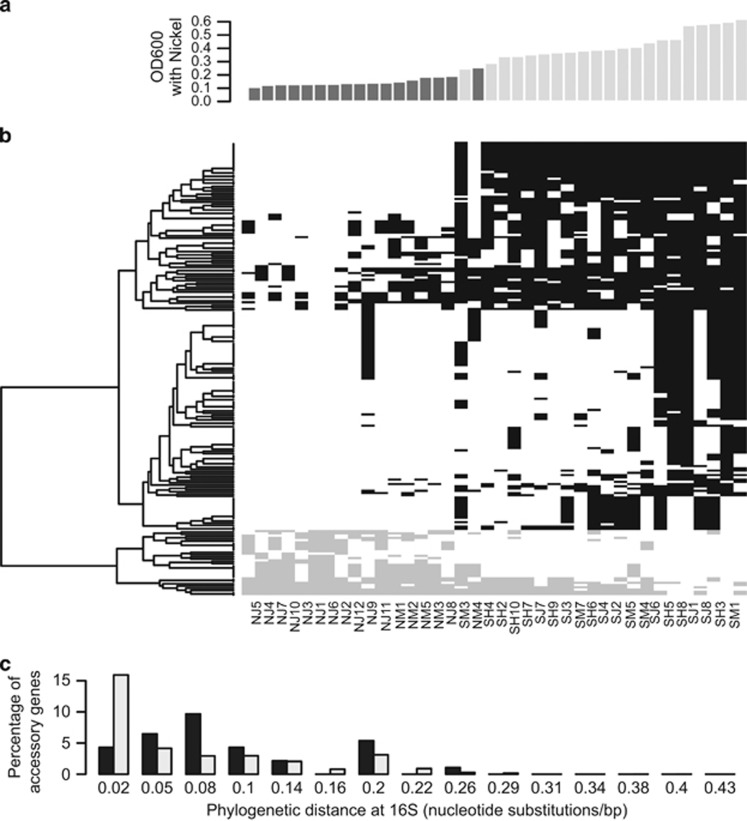Figure 5.
Candidate loci from the accessory genome do not strictly co-segregate and tend to be shared with lineages that are relatively distantly related to Mesorhizobium. (a) Growth of each focal population strain in media containing 1 mm nickel (dark gray: non-serpentine origin; light gray: serpentine origin). Strain identity is indicated in corresponding column of (b). (b) Pattern of co-segregation of accessory gene nickel adaptation candidates (10% FDR set) across the 38 strains in the focal population (black: candidates associated with increased growth in nickel; gray: candidates associated with decreased growth in nickel). Genes are ordered based on co-segregation as indicated in the dendrogram. (c) Phylogenetic distance at 16S between focal clade mesorhizobia and the bacterial lineage with the closest homolog to each accessory gene (dark gray: FDR 1% accessory gene candidates; light gray: all accessory genes with a match for which we could extract 16S information).

